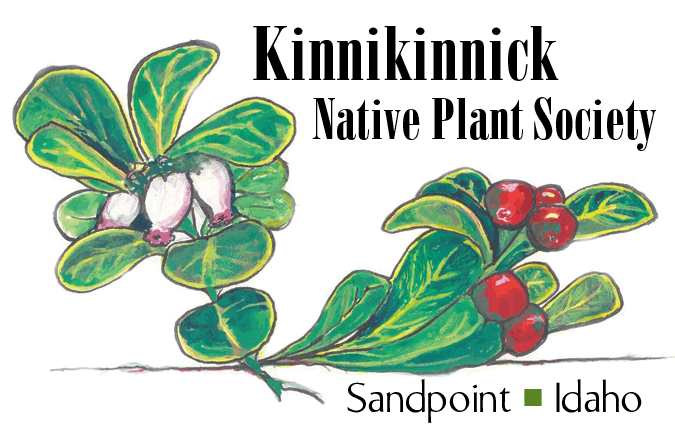Snowberry
(Symphoricarpos albus)
Snowberry
Waxy-white berries bunched on the ends of twiggy stems make winter the most conspicuous season for Snowberry, a deciduous North American native. In fact, its scientific name (Symphoricarpos albus) derives therefrom: Symphori means bare together, carpos is Latin for fruit, and albus is white. Other common names include waxberry, ice apple, and white coralberry.
Snowberry fruit
Found across much of Canada and the northern and western United States at low to mid-elevations, Snowberry prefers full sun to partial shade in woodlands, along streams, on hillsides and rocky bluffs. Once established, its deep roots protect it in dry seasons and its suckering habit makes it a great choice for soil stabilization. A native of the honeysuckle family, Snowberry is moderately fast-growing, reaching 2-6 feet tall and spreading 4-6 feet in a rounded thicket.
From June to August, bell-shaped flowers appear on short stalks in clusters of 2-10. They are white to pinkish with five connected lobes and five stamens surrounding a single style. While the flowers are small, about 1/4 inch long, and delicate, they are noticeable because of their bunched presentation. Perfect for a wildlife or pollinator garden Snowberry attracts bees, butterflies, moths, and hummingbirds.
Snowberry flower
Leaves are thin, light green, elliptical to oval-shaped and approximately 1 1/2 inches long. They grow opposite each other along the stem and the margins are smooth or wavy-toothed. Bark on mature stems splits exposing a dark purple-brown under layer.
Although Snowberries contain saponins, which are considered poisonous to humans and some animals, the berries (drupes containing two nutlets each) were consumed by Native Americans both fresh and dried. They were also used as a hair shampoo and to treat burns and skin ailments. Saponins are especially toxic to fish. When the berry crop was abundant, large quantities were thrown into streams or lakes to stupefy or kill fish for easy hunting.
In fall and winter, the berries are an important food source for birds and bears, and its thickets shelter small mammals. Deer, antelope and big horn sheep browse it regularly; moose and elk less so.
Snowberry can be found in the North Idaho Native Plant Arboretum, 611 S. Ella Ave., Sandpoint, next to the bike path. It is described on page 104 of the KNPS publication, Landscaping with Native Plants in the Idaho Panhandle, available at local bookstores and the Bonner County History Museum.
Native Plant Notes are created by the Kinnikinnick Native Plant Society. To learn more about KNPS and the North Idaho Native Plant Arboretum, explore www.nativeplantsociety.org.



